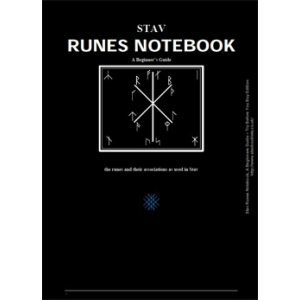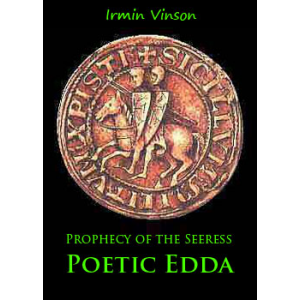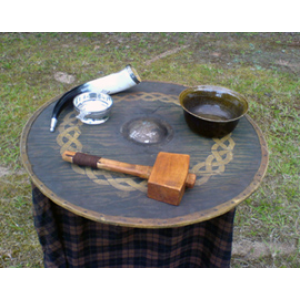
Book: Stav Runes Notebook A Beginners Guide by Alex Pidd
This guide is designed to provide an introduction to Stav and the runes of the younger futhork. Stav is a European mind, body and
spirit training philosophy. It is based on the traditions of the Hafskjold family, which have been preserved in a continuous line for over 44 generations. Advice and assistance on the study of Stav can be obtained from Einherjar Ve Stav.
Although not essential in order to gain the most from guide some previous understanding of the runes and Stav will be beneficial. This information can be found on-line at the Einherjar Ve Stav site. It is impossible to produce a definitive book detailing all the associations, symbolism and interpretations of the runes. This may appear a contradiction as you are reading this book. However, this work is designed to start the reader onto further studies and investigation. The runes, as discovered in the web (see page 1), can be said to be part of the fabric of reality. As such they are part of everything. This means they also change as our reality, or our understanding of it, changes. This is why a book cannot begin to encapsulate the true depth of knowledge held within the runes. Only the mind has any chance of unravelling the mysteries that the runes hold, hopefully inspired and aided by the clues and general hints found in this tome.
Because of the
nature of the runes this guide is therefore deliberately not definitive or absolute in its description and meaning of the runes. This is because the study of Stav involves personal interpretation and analysis. These are modified as new experiences are gained and conflicts become resolved. You will find your own comments may agree or contradict those already contained within these pages. The same rune may be interpreted slightly differently by different people or even the same person at different times and with different problems or circumstances to resolve. You may find some of the comments and observations on the runes as terse, direct and with little explanation. This is deliberate as an attempt has been made to record only the main salient points and keywords for each rune. The descriptions of the rune meanings are only a snapshot of the author's thoughts at the time of writing; they should not be taken too literally or as a definitive guide. These are only hints and reminders; there are doubtless many other meanings and interpretations that are not included in these pages. The points and keywords that are included are intended to be used as hooks onto which further expanded explanations and details can be hung. It is expected these will be given by yourself and drawn from your own experiences and relating to the problem(s) in hand. There are no absolute answers when dealing with the meanings of the runes; there are only degrees of perception.
It is hoped that you will use this guide to augment your own personal knowledge of the runes based on your own experiences. This is not a how-to-do-it-book and it will not teach all the answers about Stav and the runes. That can only be achieved by patient study of the runes and the myths. However, this guide will hopefully help to form a useful stepping stone for continued studies and learning. By combining this guide
with other texts, the runes and your own notes it will become an invaluable tool in the quest for knowledge and wisdom.
Download Alex Pidd's eBook: Stav Runes Notebook A Beginners GuideRecommended reading (pdf e-books):
Leonardo Da Vinci - The Notebooks Of Leonardo Da Vinci
Sandra Ingerman - Shamanic Journeying A Beginner Guide
Alex Pidd - Stav Runes Notebook A Beginners Guide


